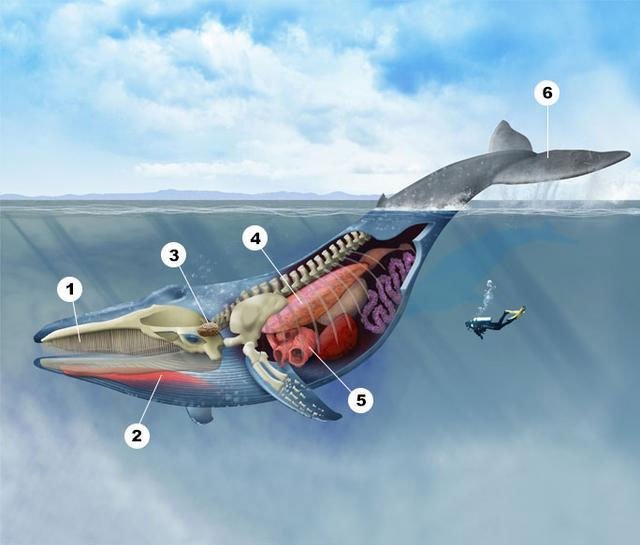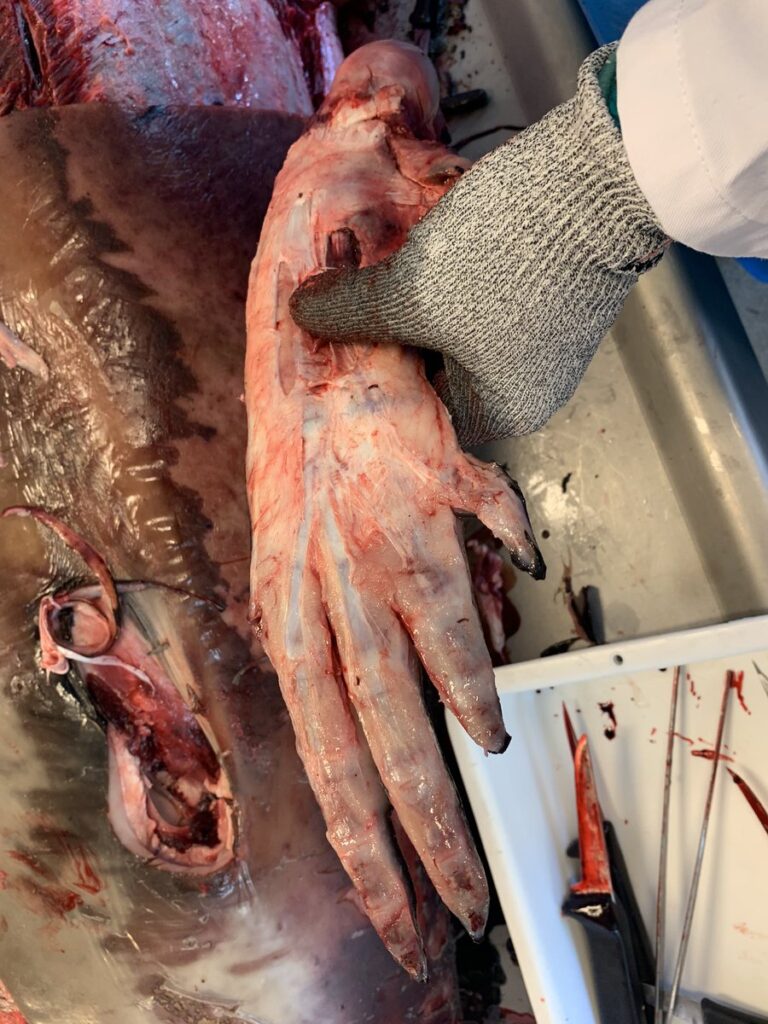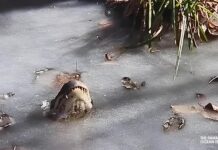Looking at a modern whale, it’s hard to believe that these creatures once walked on land. Of course, they looked a little different back then, but as a recent necropsy photo shows, whales have retained some of their land-based features, including a rather spooky hand-like appendage.
The anatomy beneath a whale’s fin is not the paddle-like anatomy one would expect, but rather a pentadactyl limb with five finger-like bony projections. GHOST HAND, as we prefer to call it.
Dr. Mark D. Scherz, curator of herpetology and assistant professor of vertebrate zoology at the Natural History Museum of Denmark, shared the eerie image on Twitter. If you think whales don’t fall under the purview of herpetology, you’d be right, but working closely with researchers and handling specimens at the drop of a hat has its perks.
“The day before my first day on the job, I received a message from Daniel Klingberg Johansson, the collections manager for herpetology and mammalogy, that a whale had washed up and would be dissected the next day,” Scherz told IFLScience. “Such rare events trigger feverish activity at the museum as various researchers and assistants work together to prepare the animal and collect data.”

The pentadactyl limb is found in a wide variety of animals, suggesting that they had a common ancestor that evolved the limb before going off and making some adaptations. So the whales’ bizarre “fingers” are a fine example of evolution’s quirks.
“Evolution is a tinkerer,” Scherz said. “Repurposing an existing structure is easier and more likely than making an entirely new structure ‘from scratch.’ When the first tetrapods (four-legged animals) emerged from the primordial oceans, the most successful line had five fingers and toes.

“Fins have evolved repeatedly in different mammalian and reptilian phyla, and each time in a different way; the basic structure is that of pentadactyl limbs, but the specific structure [of the limbs] differs greatly.
In case you are wondering: Necropsy of this kind is difficult and delicate work. Handling delicate organs requires caution if the academic value of the practice is to be maintained, but you are still working with a whale, and excising blubber and muscle is no easy task.
At the time of writing, the whale in this section is believed to be a Sowerby’s beaked whale, Mesoplodon bidens, which is rare but not unknown in this region. However, it is difficult to distinguish this species from a rarer species, Mesoplodon europaeus, which has never been observed in Danish waters (where the animal stranded).
As Daniel Klingberg Johansson explained, stranding data and physical data on both species are of great interest to scientists.

“When a whale strands, especially the larger and rarer species, there are many institutes in Denmark interested in samples for all kinds of research purposes, but the standard is samples for veterinarians to determine the possible cause of death and the general health of the specimen,” explains the researcher “He informed us. “The museum then retains a tissue sample for future DNA research and the skeleton for its collection.
“One institute is examining the organs for various types of environmental pollutants, and another is collecting gut samples to study the microbiome. Two other institutes are studying the shape and function of the muscles, with one requesting samples of the swimming muscles and the other examining the heart. No results were obtained [on this whale].”






